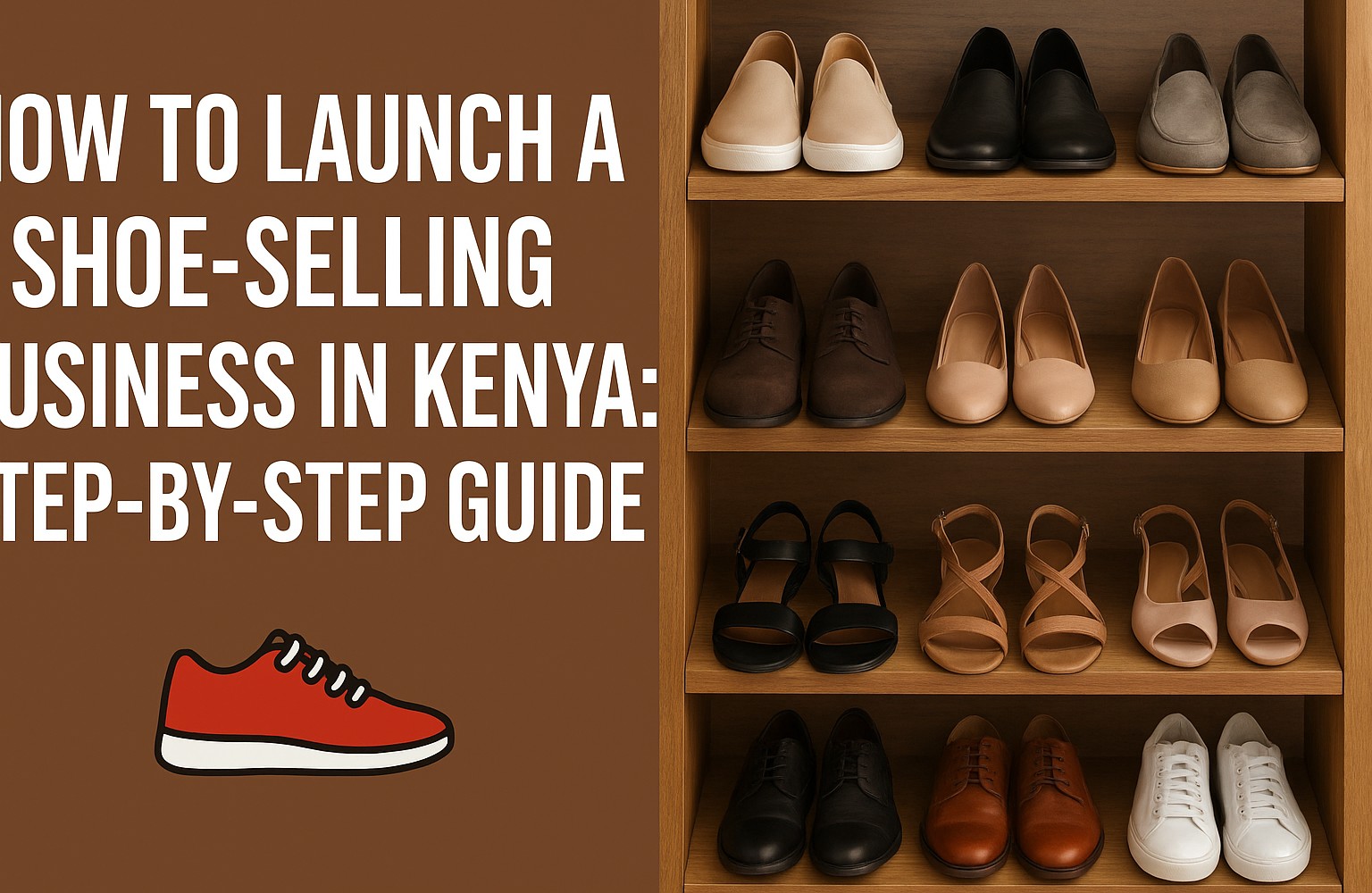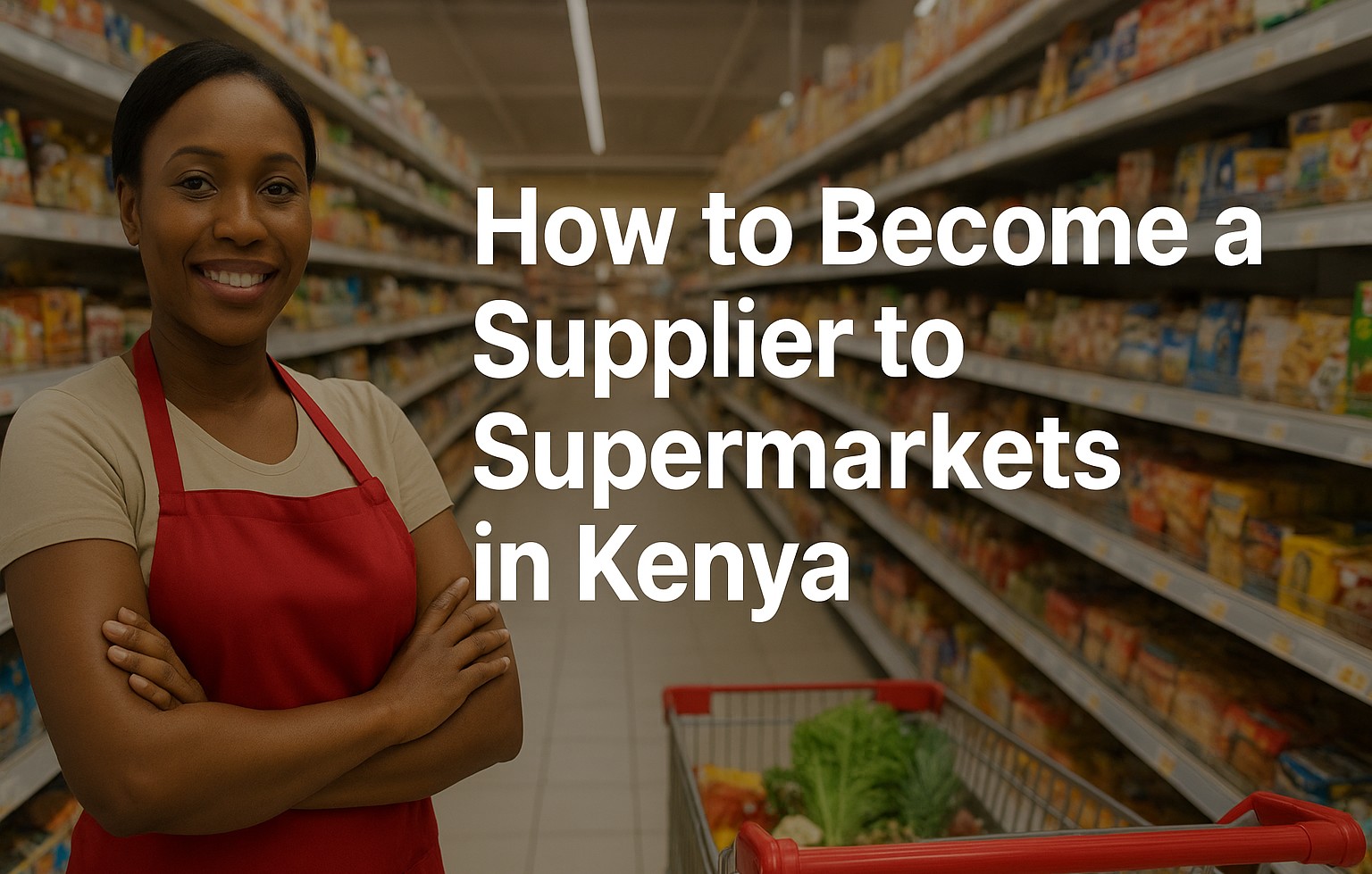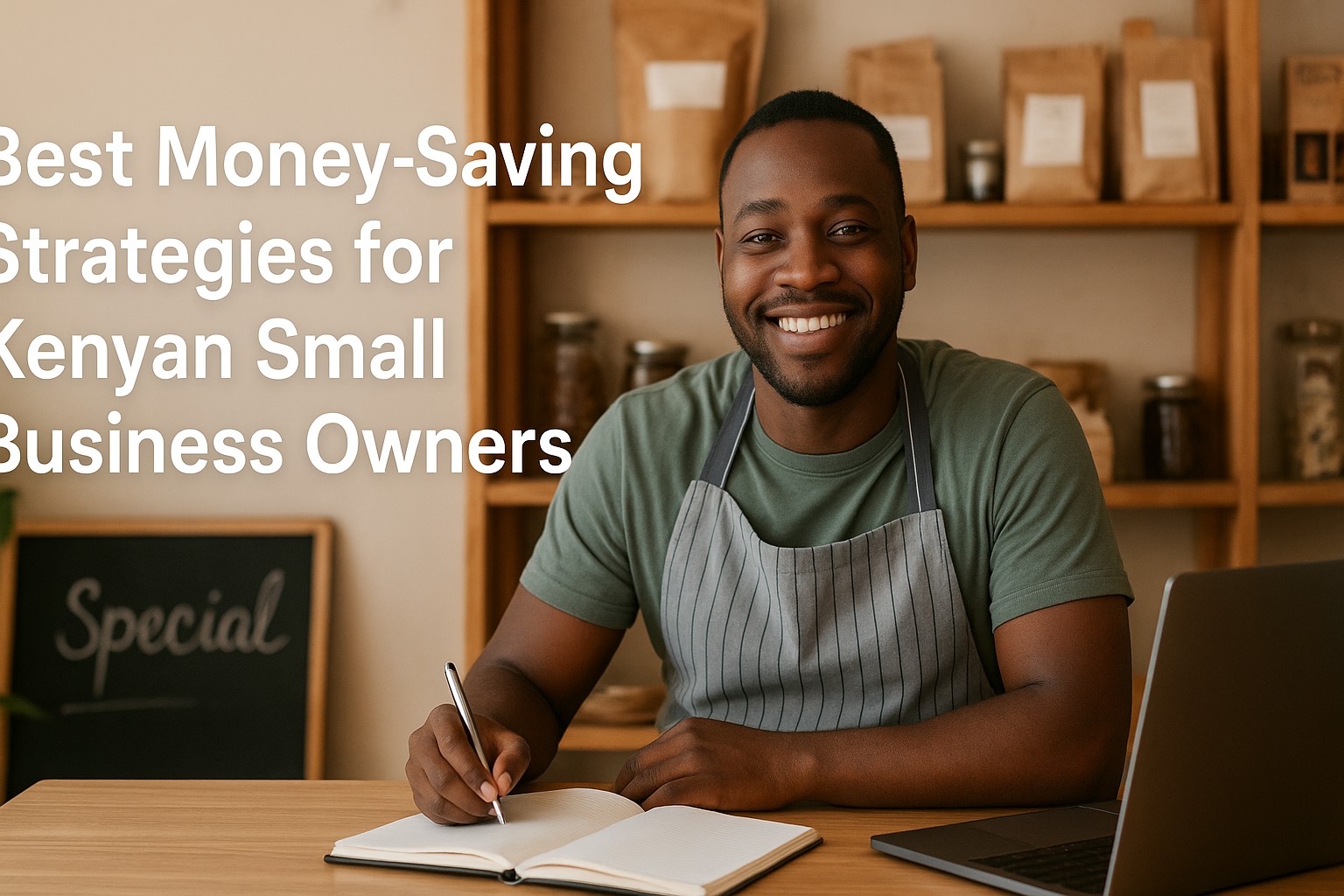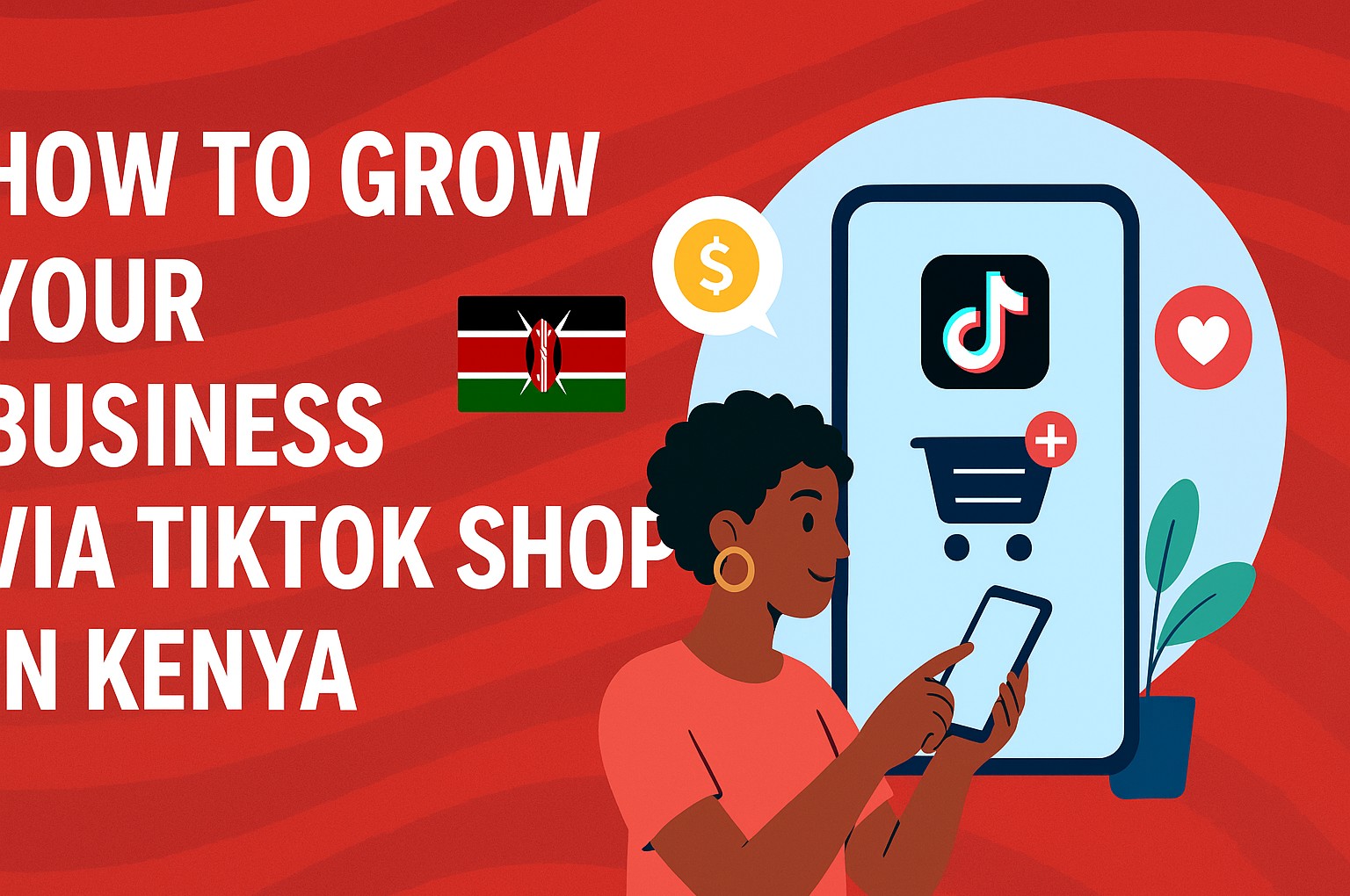

Titus Morebu
Author
How to Launch a Shoe-Selling Business in Kenya: Step-by-Step Guide 👟
Start your Kenyan shoe business the smart way — from idea to profit — with legal, sourcing, sales & marketing advice tailored for Kenya’s market.
How to Launch a Shoe-Selling Business in Kenya: Step-by-Step Guide 👟
Thinking of selling shoes in Kenya? Whether you plan a physical store, a market stall, or an online shop, this guide walks you through every essential step — from research and registration, to supply chains, marketing, operations, and scaling. Use this as your blueprint to build a legitimate, profitable footwear business tailored to the Kenyan market.
Table of Contents
- Why Start a Shoe Business in Kenya?
- Identify Your Niche & Target Market
- Business Models You Can Use
- Legal, Licensing & Regulatory Requirements
- Sourcing Your Inventory
- Setting Up Shop (Physical & Online)
- Branding, Pricing & Store Display
- Marketing & Customer Acquisition Strategies
- Operations, Logistics & Inventory Management
- Scaling, Diversification & Growth
- Risks, Challenges & Mitigation
- Conclusion & Action Steps
Why Start a Shoe Business in Kenya?
Shoes are essential items — new shoes, school shoes, sandals, sports footwear — demand is year-round. The Kenyan footwear market also has gaps in local manufacturing, creating import opportunities. Entrepreneurs report turning modest capitals into monthly incomes of tens or even hundreds of thousands of Kenyan shillings when operations scale. (One Nairobi trader started with ~KSh 40,000 and now earns KSh 300,000+ monthly.)
Here are the key merits:
- High demand across demographics (children, adults, formal / casual)
- Opportunity to differentiate via quality, style, branding
- Multiple channels: retail, wholesale, online, mobile sales
- Scalable: reinvest profits to grow inventory or open branches
Identify Your Niche & Target Market
“Shoe business” is broad — success often comes from selecting a niche to serve well. Consider:
- Children’s / school shoes — always needed and often replaced
- Women’s fashion / heels / sandals — high rotation, styling opportunities
- Sports / athletic shoes — fitness trend is growing
- Work / safety shoes — for professionals, industrial workers
- Local / handmade footwear — artisanal offerings, unique designs
- Used shoes (mitumba) — if legally compliant (see regulatory section)
When choosing your niche, consider:
- What existing demand is underserved in your location
- What customers you can reach (school zones, estates, offices)
- Supply costs and margins in that niche
- Seasonality (e.g. open sandals sell better in hot months)
Business Models You Can Use
Pick one or combine models depending on capital, risk appetite, and resources:
- Retail / physical shop / stall — sells directly to walk-in customers
- Wholesale distribution — sell in bulk to smaller retailers / vendors
- Online / eCommerce store — reach nationwide (or regionally) with lower overhead
- Drop shipping or print-on-demand — you don’t stock inventory, but handle orders and marketing
- Custom / made-to-order model — accept orders and make / commission production
Legal, Licensing & Regulatory Requirements in Kenya
Operating legally not only protects you but builds trust with customers and suppliers. Key regulatory steps:
- Register business name / entity via eCitizen (sole proprietor, partnership, company)
- Obtain KRA PIN and register for tax (VAT if your turnover qualifies)
- County business permit / Single business permit from your local county office
- Fire safety, health & safety compliance especially for permanent shops
- Import / customs compliance — if you import footwear, you’ll need:
- Import Declaration Form (IDF)
- Pre-Shipment Verification of Conformity (PVoC) / Certificate of Conformity (CoC)
- Commercial invoices, certificate of origin, etc.
- Specific protocols if importing used footwear (used clothes & shoes protocols)
Note: All used footwear and textiles imported into Kenya must comply with KEBS protocols (fumigation, labeling, certification). You also need to register with KEBS as an importer of used shoes. Noncompliance can lead to seizure or fines.
Sourcing Your Inventory
Your profitability heavily depends on good sourcing. Here are where to find stock and tips to negotiate:
Local / Kenyan Suppliers & Manufacturers
- Kenyan shoe manufacturers / leatherworkers — lower transport and import cost
- Local distributors / wholesalers in hub markets (e.g. Eastleigh, Kamukunji, Gikomba)
- Factory overruns or excess stock deals
Importing From Abroad
- Major footwear-producing countries: China, Vietnam, India, Turkey
- Order in bulk (container / pallet) to reduce per-unit cost
- Work with trusted agents and inspect samples before full shipment
- Ensure you comply with import documentation (PVoC, etc.)
Used Footwear (Mitumba) Sourcing
If you choose to deal in used shoes, you must:
- Register with KEBS as used footwear importer
- Ensure shipments are fumigated and certified
- Follow labeling, inspection, and conform to KS standards for used footwear
Setting Up Shop (Physical & Online)
Physical Store / Stall Setup
- Select a location with high foot traffic — near schools, markets, shopping malls
- Design a clean, attractive shopfront and signage
- Install shelving, display racks, mirrors, lighting — showcase your bestsellers
- Ensure shop security (locks, CCTV) and safety (fire exits)
Online Store Setup
- Choose a platform: Shopify, WooCommerce (WordPress), or local platforms
- Register a domain (ideally .co.ke or .ke) and select good hosting
- Ensure mobile-friendly, fast-loading design
- Integrate payment gateways: M-Pesa, Visa/Mastercard, PayPal, mobile money
- Enable shipping / logistics modules (calculate cost per region)
- Use high-quality product photos (multiple angles, color variants)
Branding, Pricing & Store Display
How you present your business and price your stock can make or break your competitive edge.
- Brand name & identity — pick a memorable, short name and create a logo, color scheme
- Pricing strategy — factor in cost of goods, shipping, import duties, overheads, desired margin (often 20%–50%)
- Competitive benchmarking — see what your competitors are charging in your area
- Loss leader / bundle pricing — e.g. promotions for combos (pair + socks) to increase average order
- Display techniques — front row displays, organized by size / category, clear pricing tags
- Upselling & cross-selling — e.g. shoe cleaner, insoles, socks
Marketing & Customer Acquisition Strategies
Getting initial traction is key. Use a mix of online and offline marketing:
- Social media marketing — Instagram, Facebook, TikTok: post images, videos, testimonials, behind-the-scenes
- Influencer collaborations — fashion bloggers, micro-influencers to review your shoes
- Google My Business / local listing — helps local customers find your store
- SEO & content marketing — blog about shoe care, trends, how to pick school shoes; target keywords like “shoe shop in Nairobi,” “buy school shoes Kenya”
- Flyers, posters, local adverts in schools, neighborhoods, malls, buses
- Referral programs & loyalty incentives — discount for bringing a friend, repeat customer cards
- Sales & promotions — back-to-school specials, seasonal offers
- Email / SMS marketing — notify customers of new arrivals, discounts
Operations, Logistics & Inventory Management
Smooth operations help control costs and improve customer satisfaction.
- Inventory tracking — use spreadsheets or POS / inventory software to know stock, reorder alerts
- Procurement planning — stock based on sales velocity and seasonal demand
- Warehousing & storage — keep neat, dry, and organized with inventory codes / SKU system
- Order fulfillment & delivery — use reliable courier services or own delivery vans; pack carefully
- Returns & exchange policy — clear rules to build customer trust
- Cash flow and record keeping — record every transaction, track profits, and separate business & personal accounts
- Staffing & training — if you hire assistants, train them on customer service, upselling, product knowledge
Scaling, Diversification & Growth
After your business is stable, here are growth levers you can explore:
- Expand to more branches in different estates / towns
- Add complementary product lines: bags, belts, shoe care kits
- Private labeling / mid-scale manufacturing
- Export to neighboring countries (Uganda, Tanzania)
- Wholesale supply to smaller shops / informal traders
- Offer customization / personalized footwear
- Partner with fashion designers, schools (uniform contracts), corporates (bulk shoes for staff)
Risks, Challenges & Mitigation
No business is without challenges. Here are common ones and how to mitigate:
- High competition — differentiate via quality, branding, service
- Counterfeit / low-quality imports — inspect samples, maintain quality standards
- Fluctuating currency / import cost — hedge, maintain buffer capital, adjust your pricing
- Dead stock risk — avoid overstocking slow-moving SKUs, monitor trends
- Regulatory changes / seizure risks — maintain compliance with KEBS, customs, etc.
- Logistics / delivery delays — partner with dependable couriers and communicate with customers
- Theft, pilferage, damage — insure stock, use security systems
- Cash flow crunch — always have working capital to bridge gaps, avoid over-leveraging
Conclusion & Action Steps
Launching a shoe-selling business in Kenya demands planning, hard work, and adaptability — but with the right foundation, it can be very rewarding. Here’s what you should do next:
- Conduct market research in your intended location or audience
- Pick a viable niche and choose your business model
- Register your business and get all required permits
- Source sample footwear, test quality, and negotiate supplier terms
- Set up your shop (physical, online, or both)
- Build a brand identity and marketing plan
- Roll out a small pilot, gather feedback, and scale
With consistency, an eye for quality, and smart marketing, you can transform your shoe business into a thriving enterprise across Kenya.
Gallery

Related Articles
3 articles
How to Become a Supplier to Supermarkets in Kenya – A Step-by-Step Guide 🌟
Learn how to register, pitch, and win supply contracts with Kenyan supermarkets. Step-by-step process, tips, and legal requirements — your roadmap to success.

Best Money-Saving Strategies for Kenyan Small Business Owners
Practical and actionable tips for small business owners in Kenya to cut costs, boost profits, and build resilience in 2025.

How to Grow Your Business via TikTok Shop in Kenya 🚀
Unlock TikTok Shop Kenya strategies to boost sales, visibility and customer trust with proven tactics for 2025 success.